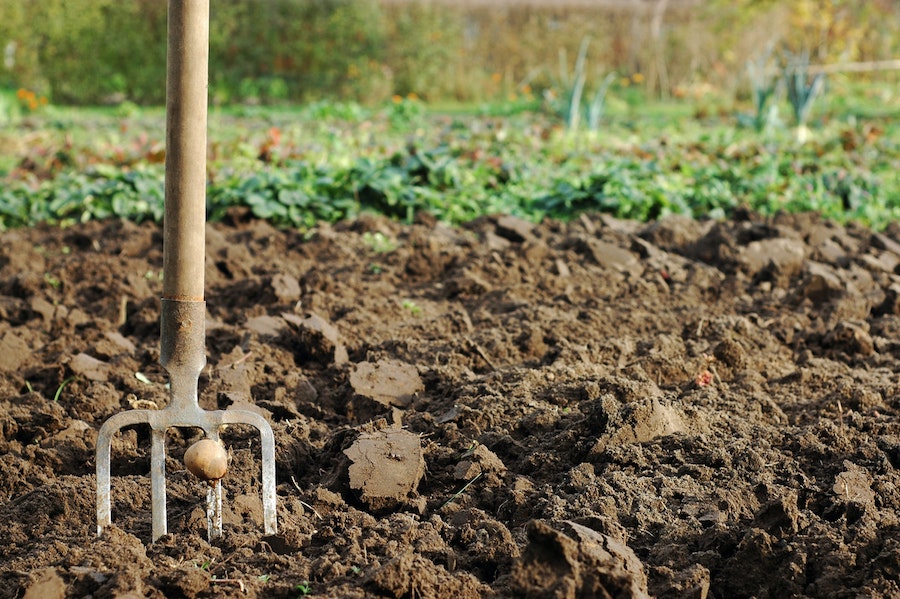Empty space on your veg patch? Boost soil with green manure crops
Green manure crops could fill empty space on allotments and boost harvests,
If you’ve spare room on your allotment, or in your garden, for crops that will fill empty spaces and boost your soil, consider plants that can turn into green manure.
You may have harvested potatoes and onions, but plant some fast-germinating replacements and you’ll stop weeds from growing, keep the goodness in, and help soil structure.
What are green manures?
View this post on Instagram
Happy post this morning 😍 no idea what I’m doing so better get reading 😂#greenmanure #improvethesoil
They are crops that can help improve your plot’s structure, stop nutrients from being washed out by rain, and provide good ground cover to stop weeds emerging. Those that belong to the pea and bean family (legumes) for example, in summer, can store nitrogen in their roots, (they’re known as good nitrogen-fixers) that can be ploughed back into the earth.
Which crops make good green manures?
At this time of year they include mustard, fodder radish, fenugreek, buckwheat and phacelia, which can be slotted in in six to eight week gaps when the ground is cleared between crops. Some sown in early autumn, including winter beans, grazing rye and winter tares, will last through the winter and can be dug into the soil when it warms up in spring.
How long do they take to grow?
Some, such as mustard, are fast-germinating. Two weeks after sowing you’ll find the ground covered with small seedlings, and after six weeks, these can be chopped and folded into the soil to add nutrients.
Fenugreek is another nitrogen-fixer for summer, really fast growing and its bushy plants are great for suppressing weeds. It can be planted in late spring or summer and grown for up to three months.
When do I cut them down?
View this post on Instagram
I planted a cover crop of clover, alfalfa and oats. Great green manure to improve the soil quality.
Chop the fast-growing ones when you need the ground back. Just dig them up, chopping up the leaves and stems as you go to speed up decomposition. Leave them a few days to wilt and then dig them into the soil.
Longer term crops such as alfalfa, red clover and trefoil can be left in the ground for a year and clipped from time to time to stop them from going woody. They are ideal for soil that’s been overused and needs to rest.
What benefits do they provide?
Clover, fenugreek, winter beans and alfalfa are good nitrogen-fixers, storing nitrogen in their roots, while clover and phacelia flowers are a magnet for beneficial insects, which can help pollinate crops, so leave some to flower. Italian ryegrass and buckwheat have root systems that will help break up heavy ground.
When can I plant crops in the space again?
A few weeks after you’ve dug in your green manure, you can sow late crops such as onion and garlic.
What if I want to wait?
If you have no crops to fill the space, cover the green manure-treated bed with cardboard or landscape fabric to keep the nutrients from the green manure in, which will give you a great seedbed to sow seeds in come spring.
What else can I grow to help my crops?
Try growing comfrey, which absorbs nutrients and minerals and can be made into a liquid feed. Just cut it down to the ground, fill a bucket with the leaves and stems of the plant, packing them in tightly and then filling the bucket with water.
Set it aside for three weeks (but keep it away from the house as it pongs when it decomposes), then strain off the liquid into a container with a tight lid. When you want to feed your plants, dilute the liquid with water at a ratio of around 10:1 and feed your plants weekly into autumn.
The Press Association
Latest posts by The Press Association (see all)
- Prince Louis shows off missing front teeth in new photo to mark seventh birthday - April 23, 2025
- Why does hearing get worse as we get older? - April 23, 2025
- Top scented plants for your garden, from a Kew expert - April 22, 2025
- How to build digital confidence over 60 - April 22, 2025
- Francis the humble pope who won the hearts of millions - April 21, 2025



















